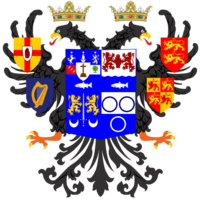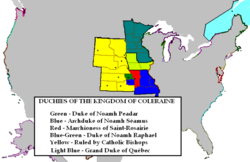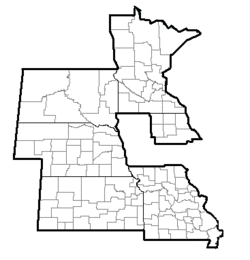Kingdom of Coleraine
This article refers to a nation which is currently in a state of inactivity. You can help make the article reflect that or ask on the talk page for further information. |
Riocht na hUlaidh Thair Nhua (Gaeilge) Tírcÿnïg dë Cúïlráïthïnë (Úndömïnflëúr) Regnum Colerainum (Latina) Royaume de Coleraine (Français) Brenhiniaeth chan Coleraine (Cymraeg) Kingdom of Coleraine (English) | |
|---|---|
| Motto: Tradition • Piety • Monarchy (English) Traidisiúnta • Cráifeacht • Ríogacht (Gaeilge) Traïdísïúnä • Píëtä • Ríögúnä (Úndömïnflëúr) Consuetudo • Pietas • Monarchia (Latina) Tradition • Piété • Monarchie (Français) Traddodiad • Duwioldeb • Brenhiniaeth (Cymraeg) | |
| Anthem: "Amhrán ar Cine na mÉireannach" | |
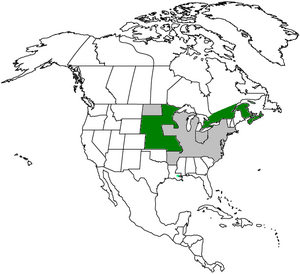 Coleraine in green, the other member states of the NAMCO in grey. | |
| Capital | Cathair Cánsas |
| Recognized languages | Irish, Welsh, Latin, French, Úndömïnflëúr |
| Religion | Roman Catholicism |
| Demonym(s) | Colerainic, Colerain |
| Government | Tanist constitutional monarchy |
• King | Seán Amádeus |
• Lord Chancellor | Lord Mac Eachaidh, 1st Duke of Noamh Peadar |
• Chancellor of the Aristocracy | Lucius Kenley |
• Chancellor of the Commons | Bryn Thomas |
| Legislature | Parliament of Kingdom of Coleraine |
| House of Lords House of Aristocrats | |
| House of Commons | |
| Establishment | |
• Creation of the Kingdom of Limavady | 871 A.D. |
• Fall of the Kingdom of Limavady | 1658 |
• Established as a micronation | 21 January 2009 |
| Population | |
• Estimate | 100 |
| Currency | Colerain sovereign (Ð) |
| Time zone | Central: UTC-7/-6/-5/-4 |
| Date format | dd-mm-yyyy |
| Driving side | left (proposed) |
The Kingdom of Coleraine, or Ríocht na hUlaidh Thair Nhua in Irish, is a Tánist state in North America.
Brief History
The origins of the Ríocht can be found in Ulster in the North of Ireland. In AD 875 when Cathalán mac Indrechtaig was crowned King of Ulster. His direct descendants would become known as the House of Ó Catháin, which still rules the successors states of Cathalán's Kingdom. In the succeeding centuries the Uí Catháin, as they became known, were soon made the Ua Rígh or Under Kings of Ulster. They would hold this throne until 1628. The following is a list of the Ó Catháin Under Kings from the 12th century AD to their fall in 1628.
- King Turlough (1096 - 1103)
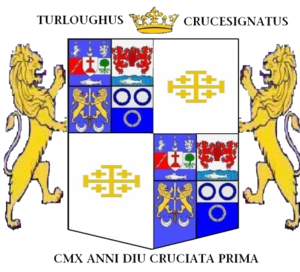
King Turlough (1096 - 1103) - Information Lost due to the Cromwellian sack of Dungiven Castle AD 1658
- King Conchobur (1171 - 1178)
- King Gilla Crist (1178 - 1182)
- King Fearal (1182 - 1213)
- King Eachmarcac (1213 - 1247)
- King Maghnus Cat Duin (1247 - 1260)
- King Cúmhaí I (1260 - 1303)
- King Diarmuid I (1303)
- King Rurarí I (1303 - 1349)
- King Cooey the Foreigner (1349 - 1385)
- King Diarmuid II (1385 - 1428)
- King Godfrey (1428 - 1433)
- King Manus I (1433 - 1468)
- King Rurarí II (1468 - 1472)
- King Seán I (1472 - 1498)
- King Donough (1450 - 1523)
- King Manus II (1523 - 1548)
- King Rurarí III (1548 - 1598)
- King Domhnáill I (1598 - 1628)
After the death of King Domhnáill I in 1628 the royal house went into exile. It was not until 2009 that his heir Tómás Ó Catháin was named the King of the new realm Ulaidh Thair Nhua (New West Ulster). His son Seán is the current Monarch. Seán III is the 9th Great Grandson of Domhnáill I. By estimation when Seán III succeeds his father as King of the Ó Catháin he shall be the 38th man to hold said title.
The Monarch
The Monarchy is the traditional head of state. The monarch must be a member of the House of Ó Catháin. In all normal circumstances the monarch will be a man, yet only if there is no male heir, or the male heir is under the age of sixteen years may a woman take the throne, either as Regent or full Queen. The present monarch is Seán III. He directly rules over the Ríocht, taking the place of his father Tómás II who has retained the position of head of the House of Ó Catháin along with all Irish titles held by the Head of the House.
The Archduke of Noamh Séamus
The title of Archduke of Noamh Séamus is given to the heir to the throne upon his sixteenth birthday. It is the highest ducal title that can be given within the Ríocht. The last Archduke was Seán mac Tómás Micháel Pádraig II Diarmuid Ó Catháin, now King Seán III, who also holds the title of Ard Tánsaite (High Prince) of Clan Ó Catháin. The Archduke is the ruler of the Archduchy of Noamh Séamus, the location of a number of major royal ministries and palaces. He rules from the Ard Tánsaitry, at present a set of apartments within the grounds of the Eastát Rígh na hCluain Sharoise (Royal Estate of Cluain Sharoise.)
The Clans
The Nobility of the Ríocht is made of a number of Clans. Each clan is led by a Taoiseach (Clan Chief) who may sit in the Teach na dTiarnaí as one of the Lords Temporal. Depending on the status of the clan it's Taoiseach may hold any title from Barún (Baron) of a Village or Borough, to Cúnt (Count) of one of the Counties, to Diúc (Duke) of a Duchy. In a number of clans there may be numerous Clan leaders sitting within the Tiarnaí. In this case the Taoiseach would hold the title of Diúc, with lesser Clan nobles being referred to by lesser titles and having lesser lands.
The Clan Conchobhair has held the crown since the foundation of the modern Kingdom of Coleraine. It's ruling house, the House of Ó Catháin, was also the reigning house of Coleraine until the Edict of Clonrise, when King Seán Amádeus created the House of Amádeus-Ó Catháin.
Parliament
The Parliament is divided into three chambers. The uppermost chamber is the Teach na dTiarnaí, House of Lords. This chamber is comprised of those Clan Chiefs which rule the Ríocht and the Catholic Bishops who preside over dioceses in the Ríocht. The middle chamber is the Teach na dUaslathaí, the House of Landsmen. This chamber is comprised of those elected land owners who dwell within the Ríocht. It is akin to the American Senate. The lowest house is the Teach na dDáil, House of Commons. This chamber is comprised of those of the working classes who are elected by the citizenry from the differing lands within the Ríocht. This chamber is divided into Members Urban and Members Rural.
The Tiarnaí is led by the Lord High Chancellor, who also serves as Prime Minister and the voice of the Tiarnaí to the King. The Uaslathaí is headed by the High Chancellor of the Landowners, who serves as voice of the Uaslathaí to the King. The Dáil is headed by the High Chancellor of the Commons, who serves as the voice of the Dáil to the King. Parliament is led by HRH the Archduke of Noamh Séamus.
The Parliament is modelled off of the British Parliament and the Estates General of Frances. It uses the Westminster system to an extent.
Language
Little has changed in the political structure of the Ríocht since it's predecessor realms in Ireland fell. The current language of the state is Irish Gaelic (Gaeilge). Gaeilge is currently spoken by a mere 40% of the population. An up and coming language, Úndömïnflëúr is the official language of common legal procedure. Úndömïnflëúr is used rather than Irish because of it's close nature to English. The third language is Latin, spoken by a mere 20% of the population is the official language of all religious proceedings. It is the official language of the Roman Catholic Church, which is at present the officially supported State Religion. English itself has no state recognition. Despite this it is the most common language, being spoken by 100% of the population in some form.
As of 23 March 2009, due to a number of citizens speaking French as their first language, French shall be recognised as an official language of the realm. It shall have the same position as Úndömïnflëúr when it comes to state affairs.
The Monarch is officially known by his name in the various tongues of the realm:
- Seán Amádeus (Gaeilge)
- Sëán Ämádëús (Úndömïnflëúr)
- Ioannes Amadeus (Latina)
- Jean-Amadieu (Français)
- Ioan Amâdeus (Cymraeg)
- Seán Amadeus (English)
The Roman Catholic Church
There is no divide between Church and State. The Roman Catholic Church is the official state religion. The Bishops of those dioceses within the realm also hold seats in the Tiarnaí. The Colerain Kings are anointed under God.
Order of Precedence of Bishops
I. The Cardinal Archbishop of Armagh, Primate of All Ireland (Since 439)
II. The Cardinal Archbishop of Chicago (Since 1914)
III. The Archbishop of Kansas City in Kansas (Since 2007)
IV. The Bishop of Kansas City-St Joseph (Since 1999)
Geography
Duchies
The Dukes of Coleraine are the highest ranking sub-regal officials. The highest ranking Duke is the Archduke of Noamh Séamus. Dukes are heads of their constituency installed by the King. Duchies have laws and governments of their own but they cannot act as their own independent nation. The Duke acts alongside the Bishop of the Diocese whose boundaries are equal to that of said Duchy. They both hod seats in the House of Lords as representatives of their Duchy/Diocese.
The Duchies are constitutional governments, having their own parliaments, and sub-constituencies. Each duchy is divided into Baronies, each barony making up of a village if in a rural or suburban area or borough if in an urban area. The baronies themselves are co-governed by a Baron and a local Parish Priest. The individual Baronies are themselves divided into estates, each run by a Knight of the realm. Beneath these Knights are the common citizens.
Those territories controlled by Coleraine that are not a part of any Duchy are run directly by the Monarchy, ruled by one of the princes of the realm or else by the King himself. Territories occupied in times of war are ruled by the military.
List of those Duchies which are a part of the Kingdom of Coleraine
-
The Arms of the Archduchy of Noamh Séamus and His Royal Highness the Archduke of Noamh Séamus.
-
The Arms of the Duchy of Noamh Peadar and of His Grace the Duke of Noamh Peadar.
-
The Arms of the Duchy of Noamh Pádraig and Her Grace the Duchess of Noamh Pádraig.
-
The Arms of the Duchy of Noamh Raphael na hArd Aingeal.
-
The Arms of the Duchy of Noamh Alaois and of His Grace the Duke of Noamh Alaois.
-
The Arms of the Grand Duchy of Québec and of His Grace the Grand Duke of Québec.
Counties
The Counts of Coleraine are the second-highest ranking sub-regal officials. Counts are heads of their constituency installed by the King. Counties have laws and governments of their own but they cannot act as their own independent nation. The Count acts alongside the Vicar of the collection of parishes of the local Vicarage whose boundaries are equal to that of said County. They both hold seats in the House of Lords as representatives of their County/Vicarage.
The Counties are constitutional governments, having their own parliaments, and sub-constituencies. Each County is divided into Baronies, each barony making up of a village if in a rural or suburban area or borough if in an urban area. The baronies themselves are co-governed by a Baron and a local Parish Priest. The individual Baronies are themselves divided into manours, each run by a Knight of the realm. Beneath these Knights are the common citizens.
Those territories controlled by Coleraine that are not a part of any County are run directly by the Monarchy, ruled by one of the princes of the realm or else by the King himself. Territories occupied in times of war are ruled by the military.
List of those Counties Organised which are a part of the Kingdom of Coleraine
NOTE: This list is presently incomplete as due to the fact that not all of Coleraine's counties are yet organised.
| Duchy | Duke | Dominant Party | Coat of Arms | |
|---|---|---|---|---|
| Archduchy of Noamh Séamus | Seán III | Royalist | ||
| Noamh Peadar | The Mac Eachaidh | Royalist | ||
| Noamh Pádraig | The Marchioness of Saint-Rosairie | Royalist | ||
| Noamh Raphael na hArd Aingeal | Diúc na hNoamh Raphael | Royalist | ||
| Noamh Alaois | Vacant, ruled by Monarch | Royalist | ||
| Grand Duchy of Québec | Jean de Blois | Royalist | ||
| County | Duchy | Dominant Party | Post Code | County Town | |
|---|---|---|---|---|---|
| Balleycoffey | Archduchy of Noamh Séamus | Royalist | BLC | Balleycoffey | |
| Ballydouglas | Archduchy of Noamh Séamus | Royalist | BLD | Ballydouglas | |
| Dunscott | Archduchy of Noamh Séamus | Royalist | DNS | Dunscott | |
| Noushea | Archduchy of Noamh Séamus | Royalist | NSA | Termontrinity | |
| Rathliam | Archduchy of Noamh Séamus | Royalist | RLM | Rathliam | |
| Glentermon | Noamh Raphael na hArd Aingeal | Royalist | GLT | Cathair Dubuque | |
| Termondonatus | Noamh Raphael na hArd Aingeal | Royalist | TDS | Kildonatus | |
| Deleware | Noamh Raphael na hArd Aingeal | Royalist | DLE | Ballymanchester | |
| Waterloo | Noamh Raphael na hArd Aingeal | Royalist | WLO | Athwaterloo | |
| Buckingham | Noamh Raphael na hArd Aingeal | Royalist | BKM | Toledo | |
| Benton | Noamh Raphael na hArd Aingeal | Royalist | BEN | Vinton | |
| Athalaois | Noamh Alaois | Society of Republicans | ALO | Cathair Noamh Alaois | |
| Athborromeus | Noamh Alaois | Royalist | BOR | Saint Charles | |
| Droghalaois | Noamh Alaois | Royalist | ALO | Cathair Noamh Alaois | |
| Noupadraic | Noamh Pádraig | Royalist | NPC | Cathair Cánsas | |
| Tyrcionne | Noamh Pádraig | Royalist | TYC | Coomcionne | |
| Nouseosamh | Noamh Pádraig | Royalist | NSH | Cathair Noamh Seosamh | |
| Clonrise | Noamh Peadar | Royalist | CLO | Cathair Noamh Peadar | |
| Kilbenedictus | Noamh Peadar | Royalist | KBT | Kilbenedictus | |
| Dunreiley | Noamh Peadar | Royalist | DRY | Dunreiley | |
Military
The Royal Armed Forces are comprised of the Royal Army, the Royal Navy and the Royal Air Corps. Though the Ríocht has no standing army there is room in it's constitution for one to be created.
Royal Post
The Royal Post is the main postal carrier of the realm. It is a department of the Home Office, which manages all domestic affairs, in contrast to the Foreign Office which manages all foreign affairs. The post is also responsible for the creation of the Post Code system.
Post Code System
The Post Code system is an alphanumerical system created for sorting mail. It was modelled after the British postcode system. The post code is between six to seven characters in length, representing the County, Village, and Clochán of the address to which the letter is being sent. The county is represented by the first three letters, or outward section of the code an example being:
NSA for Noushea
The Clochán, a subdistrict of the village, is then represented by a number at the head of the inward section of the code. This is followed by two letters denoting the village itself, an example being:
1TT for Nousheamus, Termontrinity
The entire code therefore would be NSA 1TT for Nousheamus, Termontrinity, Noushea.
The Royal Post prefers for letters to be addressed as such, with the village or borough and county captilised:
Name of Addressee
Building (If applicable)
Straid
VILLAGE/BOROUGH
COUNTY
DUCHY
Post Code
When filled in it would look as such:
Archduke of Noamh Séamus
Ardtainstry
Ioannes Amadeus Straid
TERMONTRINITY
NOUSHEA
NOAMH SÉAMUS
NSA 1TT
The main subdivisions within the realm are as follows:
Duchies are the equalivient to Provinces. Co-ruled by a Duke and a Catholic Bishop.
- Counties are a group of villages combined under the rule of a Count and a Priest appointed by the Bishop.
- Baronies are the villages (rural) or Boroughs (Urban), ruled by a Baron and the local Parish Priest.
NOTE to be named a village, a settlement must have a Catholic Parish within it's boundaries.- Manours are the districts of the village, ruled by a Knight of the Realm.
- Baronies are the villages (rural) or Boroughs (Urban), ruled by a Baron and the local Parish Priest.
The addresses of major locations within the Government and Church are as follows:
The Palace of Cluain Sharoise
Royal Straid
CLUAIN SHAROISE
CLONROISE
NOAMH PEADAR
CLO 1CS
The Ecclesiastical Palace
Royal Straid
CLUAIN SHAROISE
NOAMH PEADAR
CLO 2CS
The Ardtainstry
Ioannes Amadeus Straid
TERMONTRINITY
NOUSHEA
NOAMH SÉAMUS
NSA 1TT
The Houses of Parliament
Palace of Saint Thomas More
Ioannes Amadeus Straid
TERMONTRINITY
NOAMH SÉAMUS
NSA 1TT
Kiltrinity Parish
Royal Mile
TREMONTRINITY
NOAMH SÉAMUS
NSA 2TT
Kilpádraic Parish
Queen Mother's Straid
KILPÁDRAIC
NOAMH PEADAR
CLO 11KP
Recognition and Alliances
The Micronations that have recognized the Ríocht.
- The Empire of New Europe
- Kingdom of Camuria
- Kingdom of South Altania
- Grand Duchy of Flandrensis
- Imperial Republic of Nemkhavia
Allies of the Ríocht (by date)
- The Empire of New Europe (as of 10 March 2009)
- Kingdom of Camuria (as of 11 March 2009)
- Kingdom of Althacia (as of 17 March 2009)
- Imperial Republic of Nemkhavia (as of 4 August 2009)
Intermicronational Organisation Membership
Nations and Governments in exile recognised by the Ríocht.
- Andorra
- Monaco
- Liechtenstein
- Luxembourg
- Legitimist France
- Czarist Russia
- Sovereign Military Order of Malta
- Spain
- Swiss Confederation
- Vatican City (Holy See)
See also
King Seán III
Ultach Pound Sterling
Solidus
Colerain Sovereign
Amhrán ar Cine na mÉireannach
Military of Ulaidh Thair Nhua

